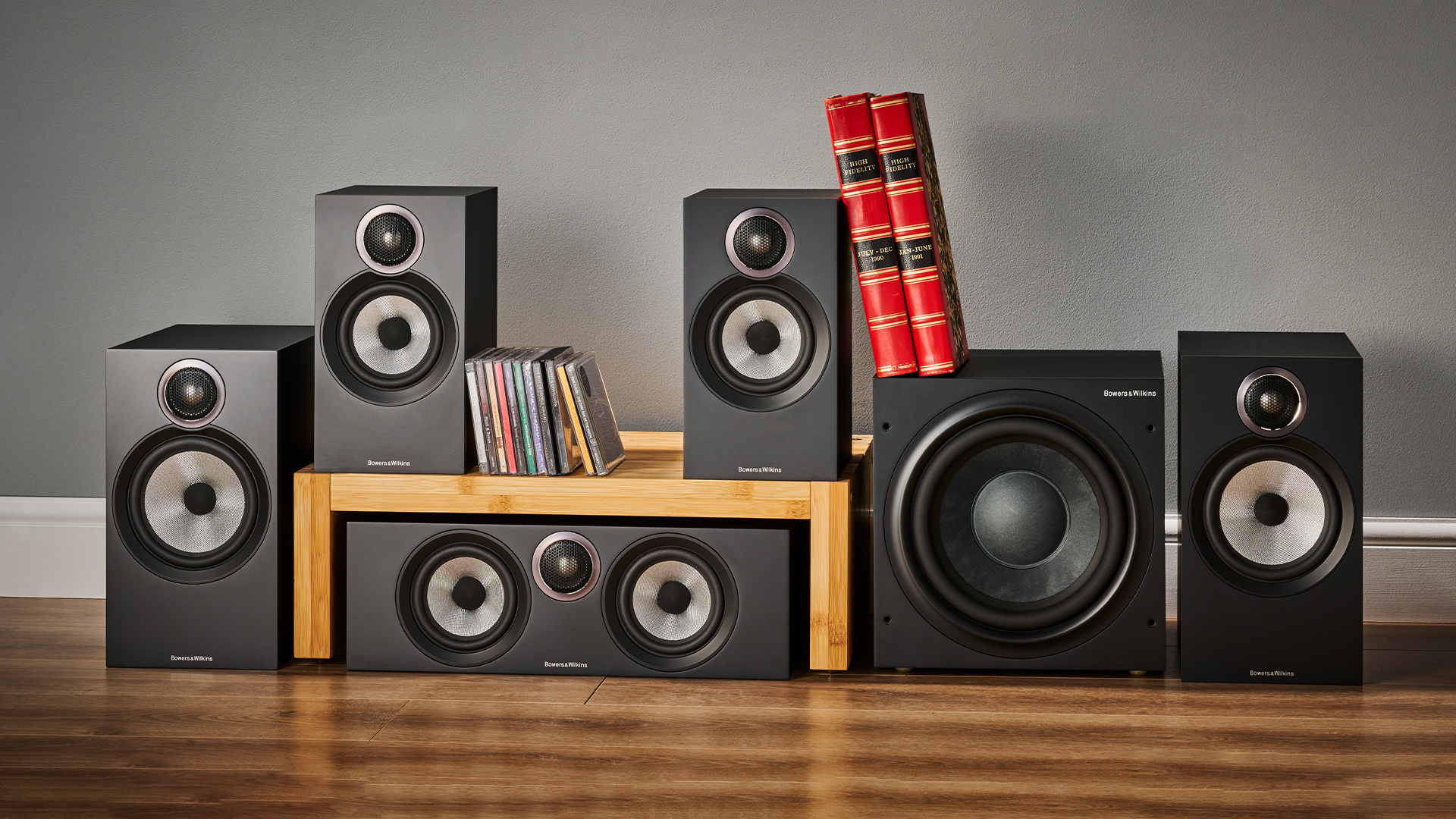LG 2021 TV lineup: everything you need to know
A new OLED panel, new processor, Mini LEDs and slimmer NanoCell models
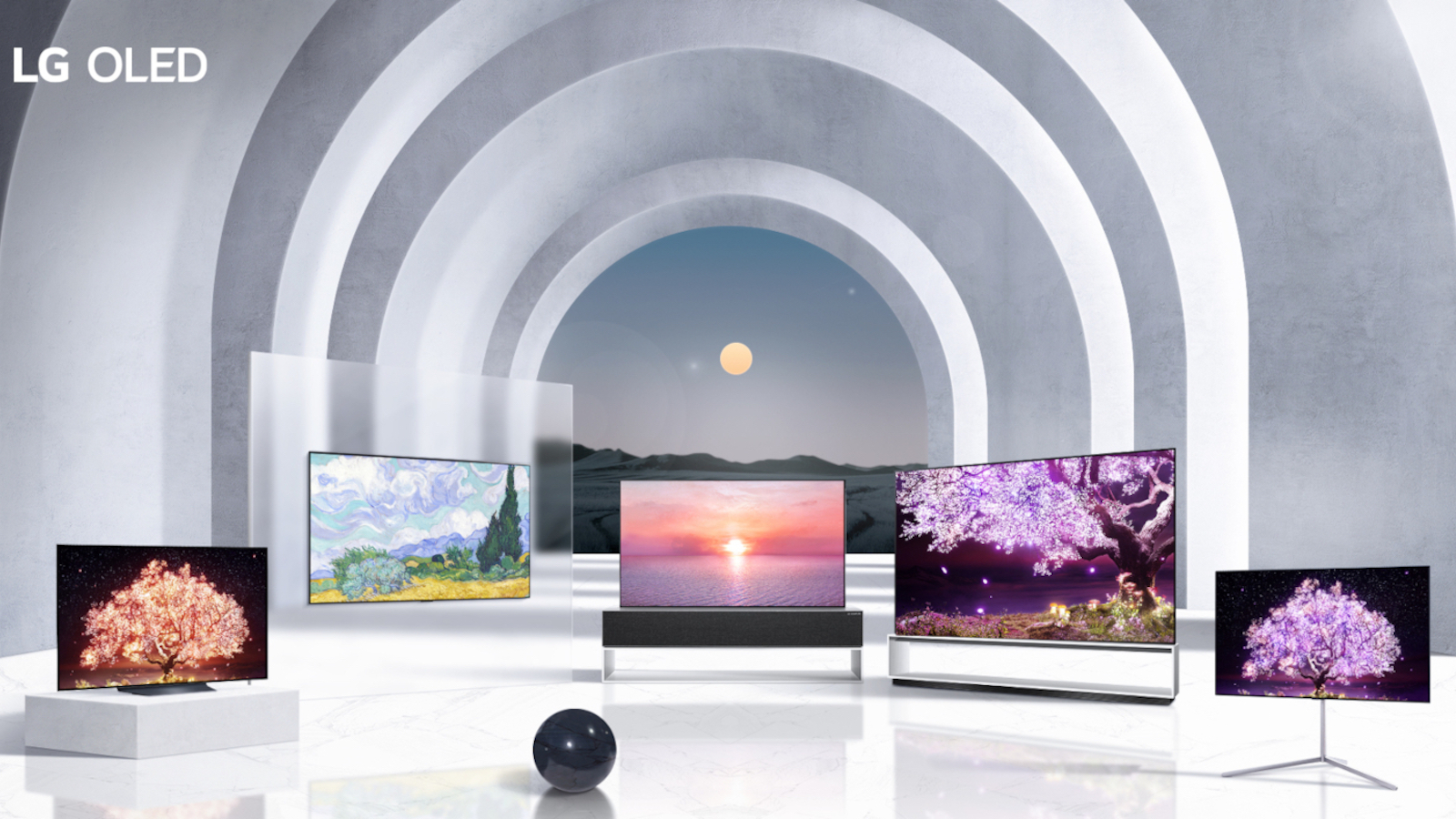
While LG has now outlined its entire TV range for 2021, along with a whole host of new TV technologies.
Probably the biggest news is that there's a new OLED panel, called OLED Evo. LG says this new panel produces a brighter, punchier and more detailed picture, and looks set to act as a response to those who say OLED panel technology has hit its technical limitations.
There's a new version of the Alpha processor for 2021, too, plus an updated version of the webOS platform and even a new Magic Remote. On top of all that, there are Mini LED-based QNED sets and slimmer NanoCell LCD models.
There's a lot to get through, so let's get cracking.
LG OLED Evo
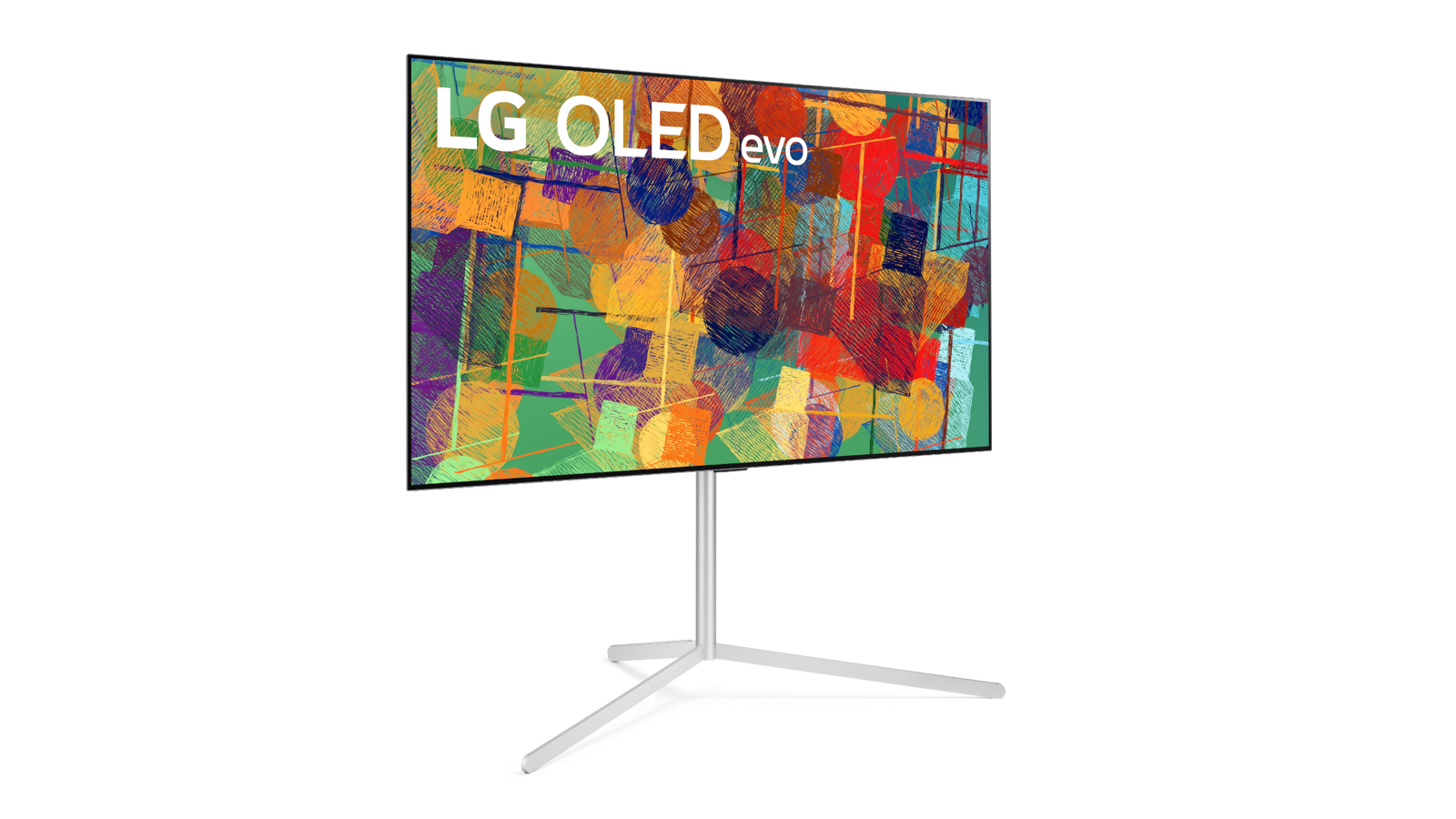
It's long been claimed that OLED technology has hit its technical peak, resulting in a slow rate of improvement, but LG appears to be pushing back on that claim with its new OLED Evo panel.
OLED Evo features a new luminous element to the panel structure, resulting in brighter and punchier images. LG is also promising greater detail and clarity. Evo is such a big deal, LG is claiming it represents the 'Second Evolution' of OLED, with the first having been the move to 4K/HDR in 2015.
That all sounds very exciting, but one slight disappointment is that you need to buy a G1 model in order to get the Evo panel. Unlike in previous years, the C-class model (that's the C1 in 2021) doesn't get you LG's top picture performance.
The latest hi-fi, home cinema and tech news, reviews, buying advice and deals, direct to your inbox.
As for whether other manufacturers will be able to use the new Evo panel for their own TVs (LG currently supplies all of the OLED panels used throughout the industry), LG currently isn't saying.
Alpha 9 Gen 4 processor
Coming as no surprise to anyone, LG's 2021 OLEDs have a new version of the company's Alpha 9 processor. The predictably named Alpha 9 Gen 4 features the same AI Upscaling, Clearer Text, Auto Genre Selection and Genre Optimisation as before, but also upgrades a couple of existing features and brings two brand new ones to the table.
Those upgraded features are Object Enhancement, which now goes beyond faces to recognise and enhance entire bodies and objects such as cars and animals, and stereo upmixing, which can now be done up to 5.1.2 channels, rather than the 5.1 of before.
The brand new features, meanwhile, are Scene Detection, which automatically optimises the picture on a scene-by-scene basis, and Auto Volume Levelling, which ensures that volume remains consistent as you switch between channels and sources.
The idea is that these technologies all work together to automatically get the best picture and sound from all sources. As an example, it will detect that you’re watching a film, then that it’s a night scene, then it will detect and enhance individual objects, and then it will up-mix the audio to 5.1.2. Switch to watching the news and it will instead enhance the on-screen text and switch to Clear Voice in order to make the dialogue clearer.
Also built into the Alpha 9 Gen 4 processor but not specifically tied to any of these AI features are improvements to de-contouring, which should result in less banding of colours, and to the dynamic tone mapping algorithm, which LG says results in better contrast and less haloing around bright objects.
LG webOS 6.0
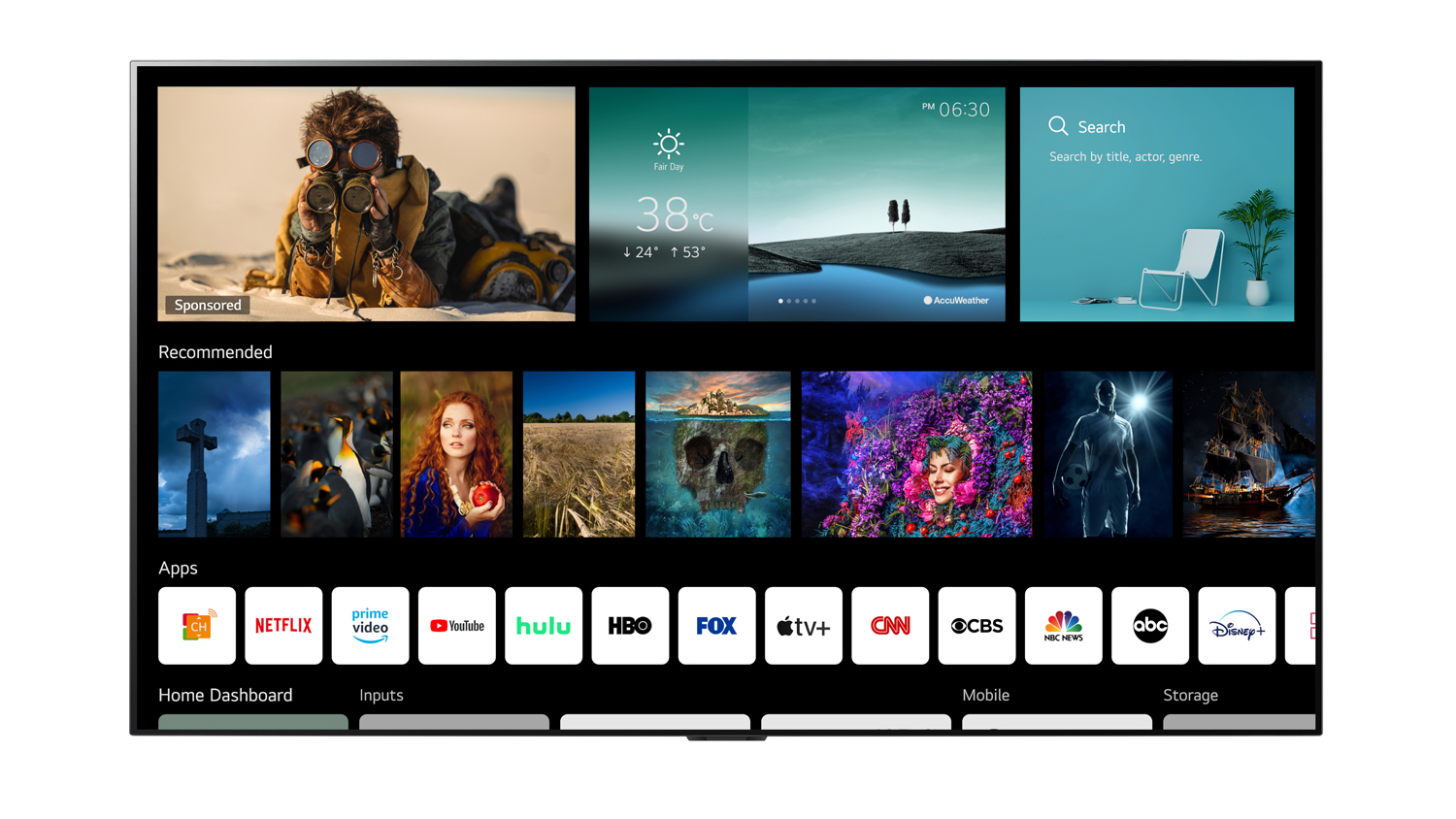
LG's webOS is one of the very best TV operating systems available, so it's of little surprise that each new iteration is more evolution than revolution. That said, 2021's webOS 6.0 is more of a departure than most.
Most notably, pressing the Home button no longer brings up a row of apps that overlays whatever you are watching, but instead takes you to a fullscreen Home menu dominated by content recommendations from various streaming services. The idea is that it’s less about hovering over or clicking on a specific app to find something to watch (although there is still a row dedicated to apps just below the specific content suggestions), and more about the content being front and centre.
That’s great in theory, but some service providers are resistant to having their content included in such aggregators. Sure enough, in our recent LG G1 OLED review we discovered that Netflix is missing from the recommendations on LG’s home menu. The intelligence of the recommendations seems questionable, too: we've not yet had long enough with the TV for it to completely learn our viewing tastes, but it seems odd that the set recommends shows for very young children at 8pm in the evening.
Ultimately, while more work is apparently needed, we rather like the new home menu overall and miss the pop-up row of apps less than expected. LG should also be applauded for finally overhauling its settings menus. The rather ugly and convoluted menus of before have been replaced by a system with larger fonts, a less severe white-on-grey colour scheme and a far more logical layout, all without sacrificing opportunities for tweaking performance.
UK readers will probably be aware that LG's 2020 models launched without any of usual catch-up apps, and in fact they still only have BBC iPlayer and ITV Hub. Thankfully, the company has now reignited its relationship with Freeview Play, and all 2021 models will get the full suite of catch-up services.
New Magic Remote
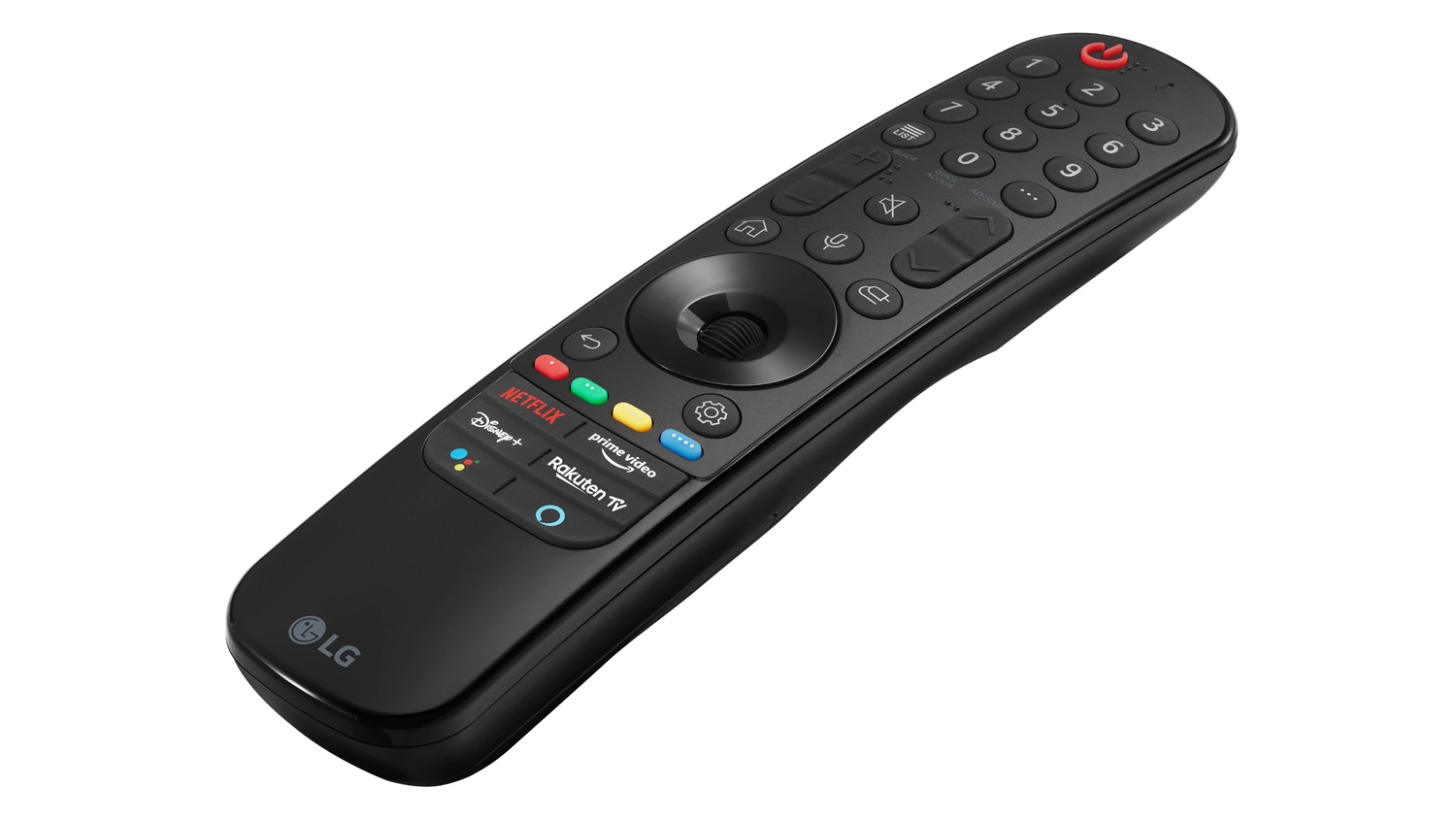
After a good few years of service, LG's original Magic Remote has finally been put out to pasture to make way for a new model.
At first glance, the new Magic Remote actually looks less slick and stylish than the old one, but in our review we found that it actually feels nicer in the hand, still works brilliantly as a pointer, and has better and more buttons.
These new buttons include dedicated ones for Google Assistant and Alexa, plus more for direct access to streaming services (the illustration provided showed shortcuts for Netflix, Amazon Prime Video, Disney+ and LG Channels, but they will vary slightly for each region).
Gaming
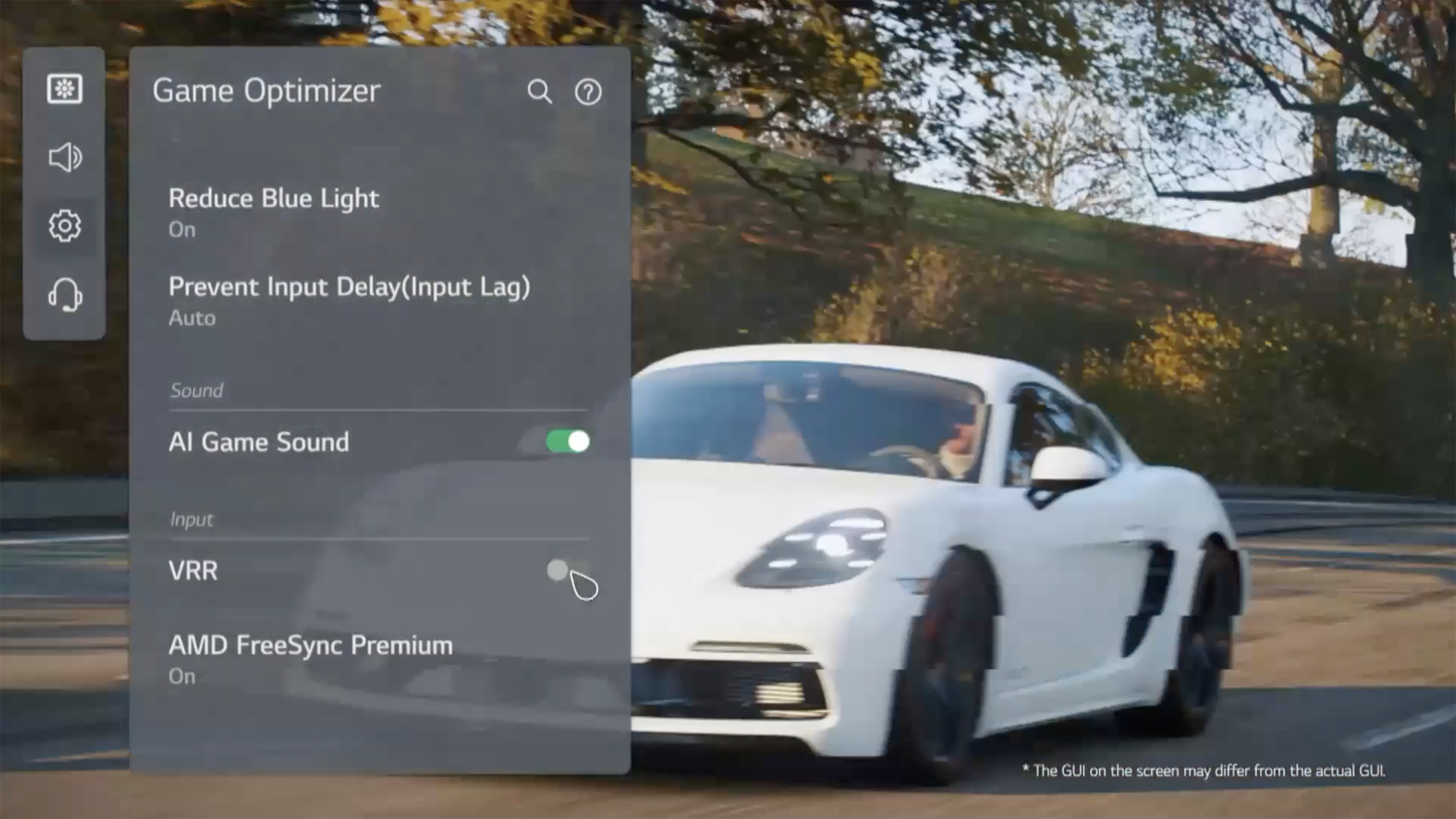
It's fair to say that LG's OLEDs are already among the best gaming TVs available, and the company is looking to push things further in 2021. HDMI 2.1 connections with ALLM (Auto Low Latency Mode), VRR (Variable Refresh Rate) and HGiG support remain, of course, but a new Game Optimizer menu has been added so that gamers can quickly enable and disable specific gaming features, such as G-Sync and Freesync. In this menu you can also select from specific gaming genres and even adjust the amount of blue light being produced.
The company is talking about the genre selection feature producing better settings for the specific type of game you're playing, but surely we all just want the minimum input lag, the sharpest definition and the most accurate colours, and that should be consistent regardless of genre? In our review of the G1 we established that these features have the potential to give you a competitive advantage by revealing details in brightest and darkest parts of the picture that you might otherwise miss, but they also make the image slightly less accurate. Our preference is still to enable HGiG and use your console's (and games') video calibration features to get the most authentic performance.
One undeniably neat addition for LG's 2021 models is the integration of the Google Stadia cloud-based game streaming service. These will be the first non-Android TVs to have Stadia built-in, although we don't yet have a date for when this functionality will be added.
LG 2021 TV range breakdown
So those are the broad technological strokes, but what about specific models?
In terms of OLEDs, 2021 is the year of '1' models, whereas 2020 was year 'X' and 2019 was year '9'. Therefore, the new C-class model is the C1 (replacing CX), and the G-class is G1 (replacing GX). On top of those two models, we also know there's a new Z1 8K model, B1 and A1 entry-level models, and a new R1 rollable model.
Disappointingly, LG has confirmed to us that there are no plans for a 2021 W-class model. That's a great shame as far as we're concerned, as LG's 'Wallpaper' models remain some of the most spectacular TVs in the industry. We were still hoping for one without speakers – just a wafer-thin panel and a Samsung One Connect-style box for the connections and processing hardware. Oh well, maybe next year.
Also interesting is that there's been no mention yet of a 42-inch OLED in LG's 2021 TV range, despite the company having just announced that it is producing a 42-inch OLED panel. One has to assume that a 42-inch LG OLED TV will be announced in fairly short order, but LG tells us it's got nothing to say on that front right now. In the meantime, an extra-large 83-inch 4K OLED TV has been added to the range.
Below the OLEDs there's a new range of QNED TVs, which combine Mini LED-based backlights with a NanoCell layer for an apparently excellent balance of contrast, colours and cost, and below those you'll find a selection of standard NanoCell models, which have themselves apparently been significantly slimmed down for 2021. Finally, at the bottom of the range there'll be a number of non-NanoCell LCD TVs.
LG Z1 8K OLED TV
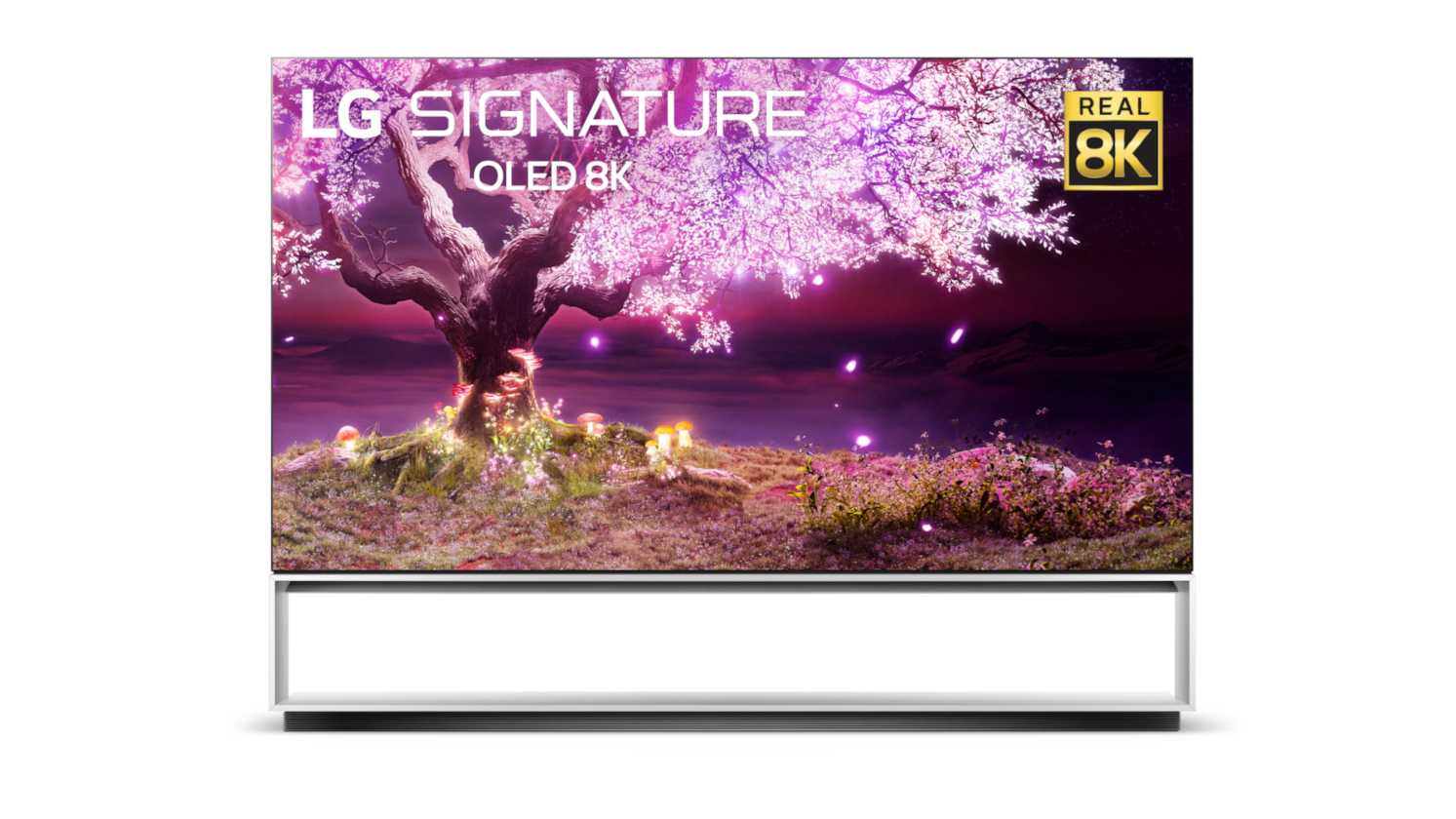
LG's top model for 2021 is, of course, an 8K OLED. The Z1 runs on an 8K-specific version of the Alpha 9 Gen 4 that's designed to make the most of the increased resolution. It will be available in 77-inch and 88-inch sizes.
One interesting thing to note is that the Z1 doesn't have the new Evo panel, but that LG still claims it delivers the best picture quality of its 2021 TVs.
Like the G1, the Z1 has what LG calls a 'Gallery' design, which means it's very thin and has a flat back that makes it ideal for wall-mounting. Unlike the G1, which comes with a wall-mount only, the 88-inch Z1 comes with a very stylish floorstand and the 77-inch model seems to include both feet and an integrated flush wall-mount.
LG Z1 specs:
- Display type: OLED
- Resolution: 8K
- Sizes: 77-inch, 88-inch
- Processor: Alpha 9 Gen 4
- Sound: 4.2ch, 60W
- HDMI 2.1: Yes (x4)
- Refresh rate: 120Hz
- 4K@120Hz: Yes
- VRR: Yes
LG Z1 pricing:
- LG OLED77Z1 – £TBC / $TBC / AU$TBC
- LG OLED88Z1 – £TBC / $TBC / AU$TBC
LG R1 'Rollable' 4K OLED TV

While it wasn't mentioned in any of the briefing documents, LG has now confirmed to us that the TV at the centre of the image above is indeed the R1 'Rollable' model. We don't know a huge beyond that, but it looks to follow the same formula as the outgoing RX, which consists of a rollable OLED panel that emerges from a TV unit that also includes a large speaker system.
We do know that despite having HDMI 2.1 sockets, the R1 apparently doesn't support VRR, which seems odd when most of the other 2021 OLED models do.
- Display type: OLED
- Resolution: 4K
- Sizes: TBC
- Processor: TBC
- Sound: TBC
- HDMI 2.1: Yes (x4)
- Refresh rate: TBC
- 4K@120Hz: TBC
- VRR: No
LG G1 OLED Evo TV
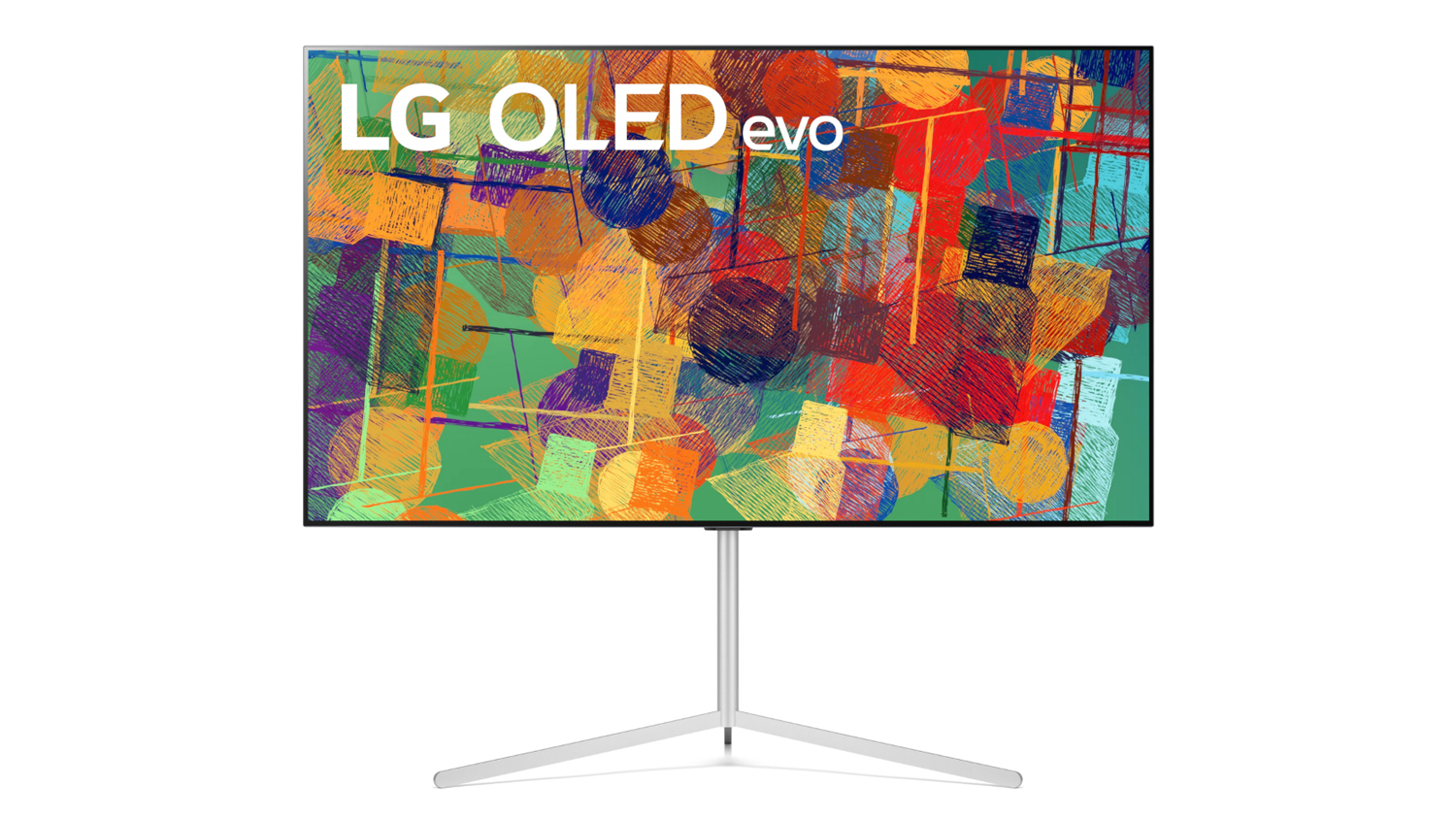
This is where things get interesting. The G1 'Gallery' TV is the only model in LG's 2021 range that gets the new Evo panel. In short, while buying a C-series model would in previous years have got you LG's top picture performance, this year you need to step up to the G1.
Like its predecessor, the excellent GX, the G1 is very thin and resembles a picture frame. Clearly, that's of great benefit if wall-mounting, but LG is also pushing a new easel-like Gallery Stand (pictured above) and has shown pictures of the G1 mounted on more traditional feet. Unfortunately, both the Gallery Stand and the feet are optional extras – you only get the flush wall mount in the box. Still, if you want the G1 and aren't planning on wall-mounting, you could always buy a third-party pedestal stand and use the TV's standard VESA mounting points.
We've now published our LG G1 review and can attest that the Evo panel delivers on the promised picture improvements. It's simply the best LG OLED we've ever tested.
- Display type: Evo OLED
- Resolution: 4K
- Sizes: 55-inch, 65-inch, 77-inch
- Processor: Alpha 9 Gen 4
- Sound: 4.2ch, 60W
- HDMI 2.1: Yes (x4)
- Refresh rate: 120Hz
- 4K@120Hz: Yes
- VRR: Yes
LG G1 pricing:
- LG OLED55G1 – £1999 / $2199 / AU$TBC
- LG OLED65G1 – £2999 / $3000 / AU$TBC
- LG OLED77G1 – £4799 / $4500 / AU$TBC
MORE: read the full LG OLED65G1 review
LG C1 4K OLED TV
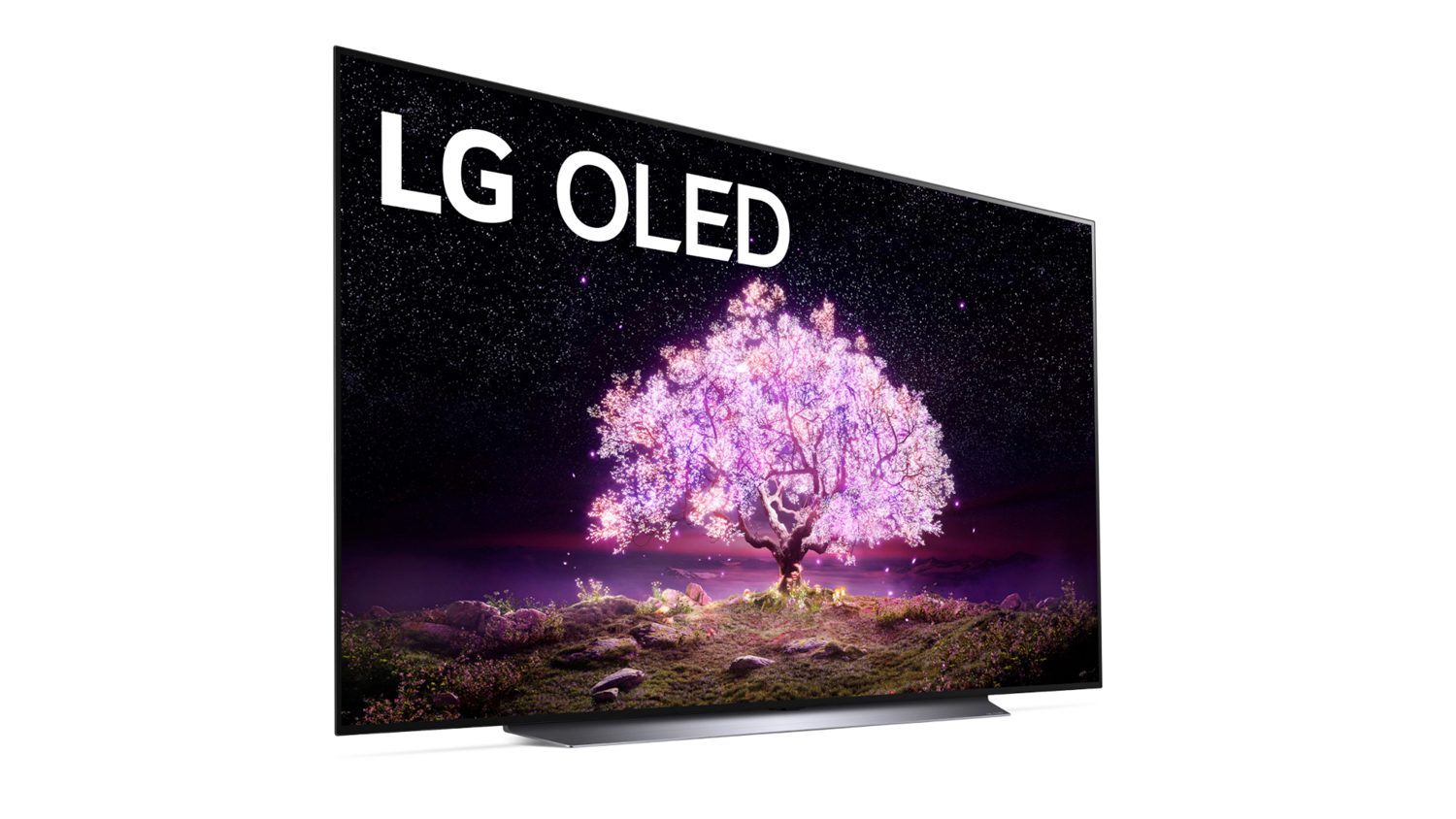
In previous years, the C-class model has been the easy pick of LG's OLEDs. It's always been the most affordable model with the best picture quality. Spend more and you'd get a fancier design and better speakers, but the picture would be the same. Not so in 2021: while the G1 gets the new, brighter Evo panel, the C1 does not.
How big a deal that turns out to be remains to be seen, but it does look as if the C1 is otherwise very well specified, with the latest version of the Alpha 9 processor and all of the latest gaming features. It's also available in more sizes than any other model in the range, starting at 48 inches and going right up to a new 83-inch size.
- Display type: OLED
- Resolution: 4K
- Sizes: 48-inch, 55-inch, 65-inch, 77-inch, 83-inch
- Processor: Alpha 9 Gen 4
- Sound: 2.2Ch, 40W
- HDMI 2.1: Yes (x4)
- Refresh rate: 120Hz
- 4K@120Hz: Yes
- VRR: Yes
LG C1 pricing:
- LG OLED48C1 – £1299 / $1500 / AU$TBC
- LG OLED55C1 – £1699 / $1800 / AU$TBC
- LG OLED65C1 – £2499 / $2500 / AU$TBC
- LG OLED77C1 – £3999 / $3800 / AU$TBC
- LG OLED83C1 – £TBC / $6000 / AU$TBC
LG B1 4K OLED TV
The B-series has traditionally been the entry point to each year's LG OLED range, but that's not the case in 2021. Compared with the C1, the B1 has a downgraded processor (the Alpha 7 Gen 4) and two fewer HDMI 2.1 sockets. It's still got a 120Hz panel, though, unlike the new A1.
- Display type: OLED
- Resolution: 4K
- Sizes: 55-inch. 65-inch, 77-inch
- Processor: Alpha 7 Gen 4
- Sound: 2.2ch, 40W
- HDMI 2.1: Yes (x2)
- Refresh rate: 120Hz
- 4K@120Hz: Yes
- VRR: Yes
LG B1 pricing:
- LG OLED55B1 – £1600 / $TBC / AU$TBC
- LG OLED65B1 – £TBC / $TBC / AU$TBC
- LG OLED77B1 – £3900 / $TBC / AU$TBC
LG A1 OLED TV
"What the heck is the A1?", we hear you ask? While not mentioned at all during LG's CES briefing, LG has confirmed to us that the A1 is in fact a totally new, extra-affordable OLED model.
The A1 is a downgrade on the B1 in two key areas: it uses a 60Hz rather than 120Hz panel, and it does without any HDMI 2.1 sockets. That makes it less well suited to next-gen gaming than its more premium siblings, but it could be an excellent option for non-gamers who want a low-cost OLED for movies and TV.
Despite the HDMIs not being 2.1-certified, the A1 does support eARC (Enhanced Audio Return Channel) and ALLM (Auto Low Latency Mode). It uses the same Alpha 7 Gen 4 processor as the B1.
Unlike the B1, it's available as a 48-inch model.
- Display type: OLED
- Resolution: 4K
- Sizes: 48-inch, 55-inch, 65-inch, 77-inch
- Processor: Alpha 7 Gen 4
- Sound: TBC
- HDMI 2.1: No
- Refresh rate: 60Hz
- 4K@120Hz: No
- VRR: No
LG A1 pricing:
- LG OLED48A1 – £TBC / $1300 / AU$TBC
- LG OLED55A1 – £TBC / $1600 / AU$TBC
- LG OLED65A1 – £TBC / $2200 / AU$TBC
- LG OLED77A1 – £TBC / $3200 / AU$TBC
LG QNED 8K and 4K TVs
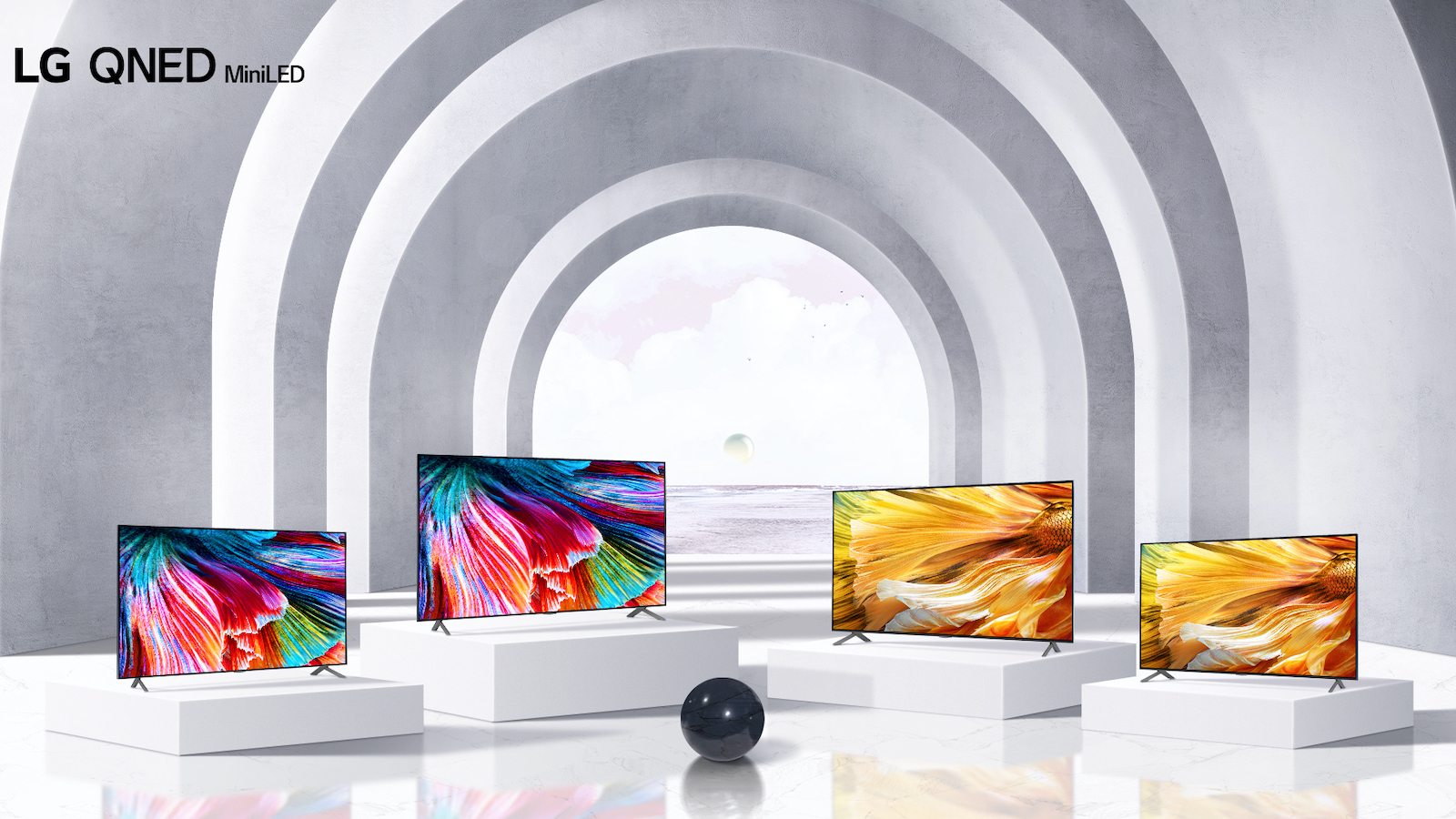
Sitting just below LG's OLEDs is a whole range of new QNEDs that combine MiniLED backlights with Quantum Dot and NanoCell technologies.
While the full lineup is yet to be outlined, we know that there will be 10 QNED models and that at the top will be an 86-inch 8K model that boasts nearly 30,000 MiniLEDs and 2500 independent dimming zones. We believe that model will be called the QNED99, and we've also seen reference to a QNED95, which we believe to also be an 8K model. Both of these will feature the top-of-the-range Alpha 9 Gen 4 processor.
Additionally, we've seen reference to a QNED90, which doesn't have the Alpha 9 Gen 4 but does support VRR for gaming, and presumably a 4K model.
LG NanoCell 8K and 4K TVs
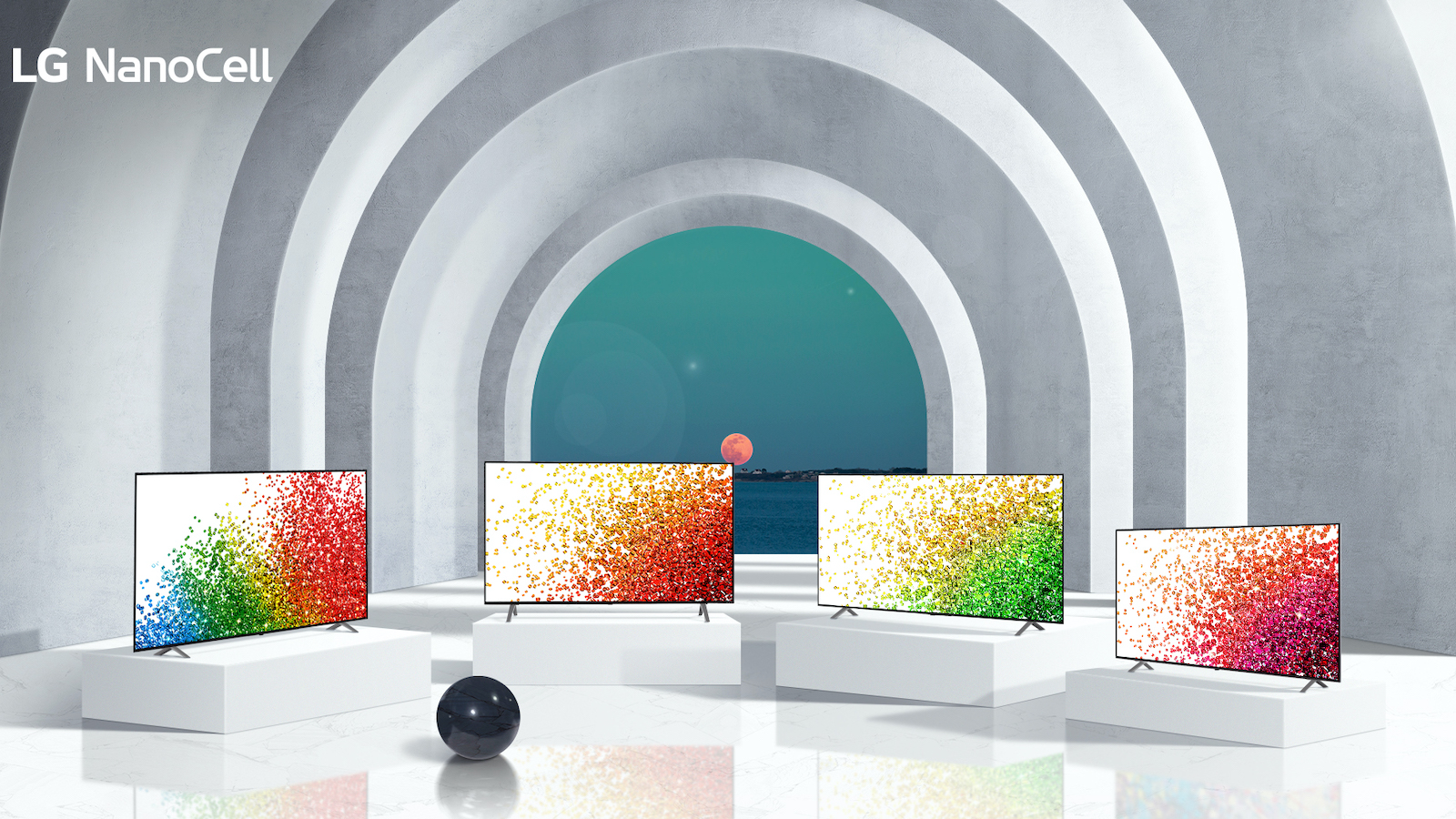
LG is continuing to produce standard NanoCell models (i.e. without Mini LEDs) in 2021, and they appear to be much slimmer than those that have gone before.
The range also includes lots of features, such as Dolby Vision IQ, VRR, eARC and Stadia, though we'd assume that many of those are reserved for the more premium models.
The only model numbers we have so far are NANO99P, NANO95P and NANO90P. The first two of those appear to be 8K models, while the last one seems to be 4K.
LG LCD TVs
LG has confirmed that it will also continue to produce standard LCD TVs in 2021, but no features, sizes, model numbers or even pictures have yet been offered.
MORE:
Compare that with the full Samsung 2021 TV line-up.
And take a look at what there is to offer in the Sony 2021 TV line-up too.
Tom Parsons has been writing about TV, AV and hi-fi products (not to mention plenty of other 'gadgets' and even cars) for over 15 years. He began his career as What Hi-Fi?'s Staff Writer and is now the TV and AV Editor. In between, he worked as Reviews Editor and then Deputy Editor at Stuff, and over the years has had his work featured in publications such as T3, The Telegraph and Louder. He's also appeared on BBC News, BBC World Service, BBC Radio 4 and Sky Swipe. In his spare time Tom is a runner and gamer.

